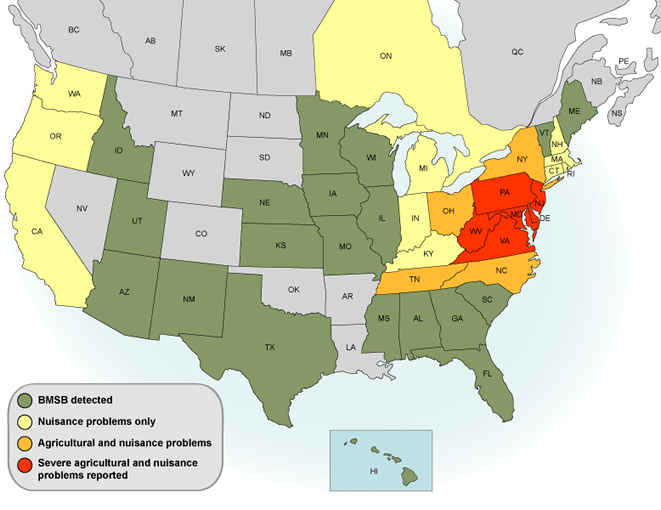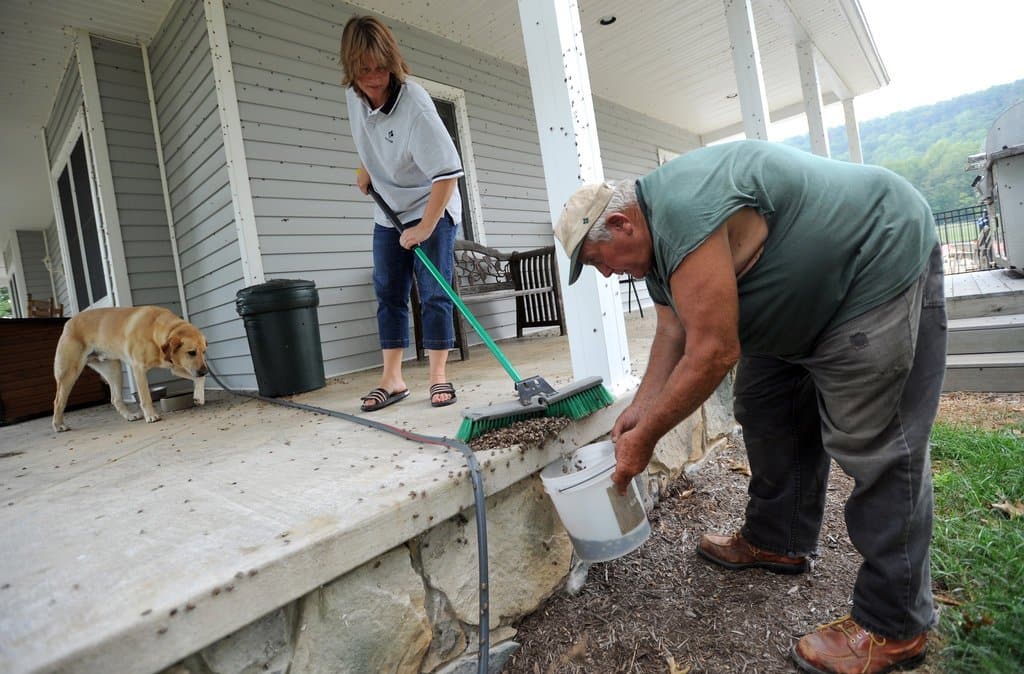Brown Marmorated Stink Bug | Des Moines, IA
Few pests conjure up an immediate feeling of revulsion the way stink bugs do. If you encounter a stink bug infestation in or around your home, you should seek professional help. Preferred Pest Control has the answers to the questions you have about these pests and getting rid of stink bugs.
Adult brown marmorated stink bugs tend to be grey-brown in color, have six legs, are about 5/8 of an inch long and have a triangular shape. They have light bands on their antennae and dark bands on the edge of their abdomen. The stink glands that give the brown marmorated stink bug its name are located under the thorax between their first and second set of legs.
During the warmer months, the female brown marmorated stink bugs will attach their eggs underneath leaves and stems. After the nymphs hatch, they go through about five immature stages before becoming full-sized adult stink bugs.
In What States Are Stink Bugs Found?
We understand no one really wants the brown marmorated stink bug around, but where do they typically live? According to stinkbug-info.org, the brown marmorated stink bug can be found in many parts of the U.S.

Photo credit: stinkbug-info.org
Brown Marmorated Stink Bugs in Iowa:
Stink bugs are not known to bite or damage property. However, many Iowans consider them a dangerous and sometimes costly pest. If you live on a farm and raise agriculture, you'll want to get rid of stink bugs immediately. In addition to ruining crops, these pests are known to invade Iowa homes, creating a stink bug infestation before you know it.
Can Stink Bugs Damage Crops?
Stink bugs attack crops and plants such as peaches, apples, corn, citrus fruits, tomatoes, soybeans and more. They feed by piercing the plant with their proboscis to suck the juices out, which permanently damages the crop. Brown marmorated stink bugs are also known to carry diseases from plant to plant as they eat. If farmers don't realize they have a stink bug infestation, they could lose their entire crop and suffer huge losses from these pests.
A few stink bug species do not feed on plants, but rather, the insects that eat plants. Some gardeners will consider the predatory stink bugs beneficial since they will feed on beetles, root weevils, caterpillars and sometimes other stink bug species.
What Are The Signs of a Stink Bug Infestation?
If you see a brown or green insect flying around your home that you're not familiar with, your first reaction is probably to squash it. The unpleasant odor that these critters release when they're in danger is why they are called "stink bugs".
Often times, stink bug infestations will start as the weather gets colder and the pests are looking for shelter. They will hide out during the winter then show themselves inside the house in the spring when they're looking for an escape to the outdoors.
How Do You Get Rid of Stink Bugs?
Homeowners can take precautions to ward off of stink bugs. To prevent stink bug infestations in your home or business, seal cracks around windows, siding, utility pipes, doors, outlets, chimneys and any other openings.
If you do find yourself with an infestation, there are a few methods you can try. In states where brown marmorated stink bug populations are really high, homeowners have been known to sweep these bugs off their porches into buckets and then dispose of them. The photo below was taken in Maryland, who has one of the highest population of stink bugs. Other methods homeowners use are picking up these critters with tissues and flushing them down the toilet or sucking them up in a vacuum and immediately getting rid of the vacuum bag. If none of these techniques work, call an exterminator for their professional pest removal services.

Photo credit: NY Times
Leading Pest Control in Des Moines
Are you worried that you have a stink bug infestation? Our team of pest technicians can help! Our experienced exterminators know the best way to get rid of stink bugs and any other pest problem you may have. Schedule an appointment with us online or call (515) 415-5550 today!